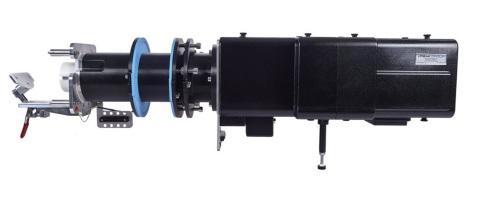Peak Production Improves Tooling Process and Manufacturing Efficiency With Stratasys Fortus 450mc 3D Printer
 After a string of rather dismal financial numbers in 2015, 3D printing titan Stratasys and their new CEO Ilan Levin have spent the better part of 2016 working to improve the company’s finances and operational efficiency. To do this, Stratasys has focused in on the niche markets that they have had undoubted success in, and as their 2016 second quarter financials indicate, the strategy seems to be paying off thus far. One of the areas they’ve succeeded in is with their commercial-grade FDM 3D printing, namely with the Fortus 3D Printer line.
After a string of rather dismal financial numbers in 2015, 3D printing titan Stratasys and their new CEO Ilan Levin have spent the better part of 2016 working to improve the company’s finances and operational efficiency. To do this, Stratasys has focused in on the niche markets that they have had undoubted success in, and as their 2016 second quarter financials indicate, the strategy seems to be paying off thus far. One of the areas they’ve succeeded in is with their commercial-grade FDM 3D printing, namely with the Fortus 3D Printer line.
Earlier this year, Stratasys unveiled an array of enhancements for their commercial-grade Fortus FDM printer line. The primary focus of these improvements was to reduce the cost and production time required for prototyping, tooling, and end-use parts. One of the companies that has taken advantage of Stratasys’ FDM printing is Peak Production Equipment Ltd., a UK-based manufacturer of automated test equipment and test fixtures. By utilizing the Fortus 450mc Production 3D Printer to assist in the production of jigs and fixtures, Peak Production has reportedly reduced their lead times by 90% and production costs by 50% compared to CNC machined parts.
Servicing high-end clients like Rolls Royce, Siemens, and BAE Systems, Peak Production manufactures a wide array of test equipment, from simple test boxes for subcontract manufacturers to standalone high specification test racks and systems used in the aerospace and defense industries. The Fortus 450mc has enabled the manufacturer to rapidly create tools and increase production efficiency, especially in regards to turnaround times for their customers.
“The production of high value tools such as jigs and fixtures using 3D printing is an application widely adopted by manufacturers around the world to great success,” said Andy Middleton, President of Stratasys EMEA. “Operating its 3D printer 24/7, Peak Production is the ideal example, demonstrating how 3D printing can be utilized as a high volume production method for tooling applications to rival, and in this case, replace traditional manufacturing methods. The ability to produce high performance 3D printed parts that can match the strength of traditional tools – faster and more cost-effectively than ever before – offers manufacturers a new way to innovate, increase productivity and become more competitive with their manufacturing.”
For their jigs and fixtures, Peak Production has turned to Stratasys’ Nylon 12 and ABS materials, both of which provide part strength comparable to CNC machined tools. For jigs, such as mechanical and pneumatic push down tools, the Fortus system has enabled the manufacturer to test and assemble these complex parts directly on the production line, while the printer’s large build size has given Peak improved flexibility to customize and optimize the performance of individual tools.

To test the catch used to release the landing bay door of an aircraft, Peak Production uses complex 3D printed components.
Peak Production has been using the Stratasys Fortus 450mc Production 3D Printer to improve their tooling process and manufacturing efficiency for 18 months now. Not only has 3D printing technology enabled them to produce more complex tools of various sizes on demand, it’s also helped reduce the number of manual processes needed during production, helping to maximize manufacturing efficiency. The printer was purchased from Stratasys UK reseller Laser Lines, and Peak Production plans on adding another Fortus system to their manufacturing family in the coming year. Discuss further in the Peak Production Uses Stratasys Fortus 3D Printers forum over at 3DPB.com.
Subscribe to Our Email Newsletter
Stay up-to-date on all the latest news from the 3D printing industry and receive information and offers from third party vendors.
You May Also Like
New Report: Semiconductor Industry to See $1.4B in 3D Printing Revenues by 2032
“The semiconductor sector has become the most strategically significant area of global industry.” Truer words are hard to come by when it comes to the modern world, and they are...
Will Photonic-Crystal Lasers Revolutionize 3D Printing?
Powder bed fusion (PBF) for metals and polymers predominantly utilizes lasers as the primary heat source. Some directed energy deposition (DED) technologies also employ lasers, while various vat polymerization methods...
3D Printing Unpeeled: Orbex Investment, IndoMIM and HP, Ultrasonic Waves
INDO-MIM has bought three HP Metal Jet S100 printers, operating two in India and one in Texas. This is a win for HP because the company has deep experience in...
3D Printing Webinar and Event Roundup: April 21, 2024
It’s another busy week of webinars and events, starting with Hannover Messe in Germany and continuing with Metalcasting Congress, Chinaplas, TechBlick’s Innovation Festival, and more. Stratasys continues its advanced training...
































